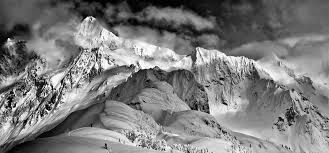The Timeless Allure of Black and White Photography
Black and white photography has a unique charm that has captivated artists and audiences for generations. In an age where vibrant colours dominate our visual landscape, the simplicity and elegance of monochrome imagery continue to hold a special place in the world of photography.
One of the key strengths of black and white photography is its ability to evoke emotion and tell a story in a way that transcends the limitations of colour. By stripping away the distraction of colour, black and white images compel viewers to focus on composition, contrast, texture, and lighting.
The absence of colour also lends a timeless quality to black and white photographs. Whether capturing candid moments on the street or creating dramatic landscapes, monochrome images have a classic appeal that can transport viewers to different eras or evoke nostalgia for bygone times.
Black and white photography is not just about removing colour; it is about embracing the interplay between light and shadow to create striking visual effects. Shadows become more pronounced, textures more tactile, and details more pronounced in monochrome images, adding depth and dimension to the final photograph.
For photographers, working in black and white can be a rewarding creative challenge. It encourages them to think differently about composition, contrast, and tonal range, pushing them to hone their skills in capturing the essence of a scene without relying on colour cues.
Whether you are an aspiring photographer looking to explore new artistic avenues or simply an admirer of visual artistry, black and white photography offers a rich tapestry of expression waiting to be discovered. Its enduring allure lies in its ability to transcend trends and speak directly to the soul through its timeless beauty.
Mastering Black & White Photography: 6 Essential Tips for Striking Images
- Focus on contrast to make your black and white photos more dynamic.
- Pay attention to textures and patterns for interesting compositions.
- Experiment with different lighting techniques to create mood and drama.
- Use leading lines to guide the viewer’s eye through the image.
- Consider long exposures for capturing movement in a unique way.
- Don’t be afraid to crop your images to enhance the composition.
Focus on contrast to make your black and white photos more dynamic.
When it comes to black and white photography, focusing on contrast is key to creating dynamic and impactful images. By playing with the interplay between light and dark tones, photographers can add depth, drama, and visual interest to their photographs. Strong contrasts can help draw the viewer’s eye to key elements in the composition, creating a sense of movement and energy within the frame. Whether capturing striking silhouettes against a bright sky or highlighting intricate textures in a monochrome landscape, mastering contrast can elevate your black and white photos to new levels of artistic expression.
Pay attention to textures and patterns for interesting compositions.
In black and white photography, paying attention to textures and patterns can elevate your compositions and add depth to your images. By focusing on the intricate details of textures and the repetitive nature of patterns, you can create visually compelling photographs that engage viewers on a tactile level. Experimenting with different surfaces, materials, and designs can lead to striking contrasts and captivating visual narratives in monochrome, enhancing the overall impact of your photography.
Experiment with different lighting techniques to create mood and drama.
In the realm of black and white photography, a powerful tip to enhance your images is to experiment with various lighting techniques to evoke mood and drama. The interplay of light and shadow in monochrome photography can significantly impact the emotional resonance of a photograph. By exploring different lighting setups, such as harsh directional light for dramatic contrast or soft diffused light for a subtle and ethereal feel, photographers can elevate their compositions to convey a range of emotions and narratives. Embracing diverse lighting techniques not only adds depth and dimension to your black and white photographs but also allows you to craft compelling visual stories that resonate with viewers on a profound level.
Use leading lines to guide the viewer’s eye through the image.
In black and white photography, utilising leading lines is a powerful technique to direct the viewer’s gaze through the image with purpose and impact. By incorporating elements such as roads, fences, or architectural features that naturally lead towards a focal point, photographers can create a sense of depth and movement within their composition. These lines not only enhance visual flow but also draw attention to key elements, guiding the viewer on a visual journey that enriches their experience of the photograph.
Consider long exposures for capturing movement in a unique way.
When delving into black and white photography, one intriguing tip to consider is utilizing long exposures to capture movement in a distinctive manner. By embracing long exposure techniques, photographers can create mesmerising images that convey a sense of fluidity and dynamism. This approach allows for the blurring of moving elements within the frame, resulting in a visually captivating effect that adds a layer of intrigue and artistry to the final photograph. Embracing long exposures in black and white photography opens up a realm of creative possibilities, enabling photographers to transform ordinary scenes into extraordinary visual narratives through the lens of time and motion.
Don’t be afraid to crop your images to enhance the composition.
In black and white photography, don’t hesitate to crop your images to improve the composition. Cropping can help eliminate distractions, focus on key elements, and create a stronger visual impact. By adjusting the framing of your shot, you can enhance the overall balance and harmony of the image, drawing attention to what truly matters in the scene. Experimenting with different cropping techniques allows you to fine-tune your compositions and bring out the essence of your subject in a more compelling way.

